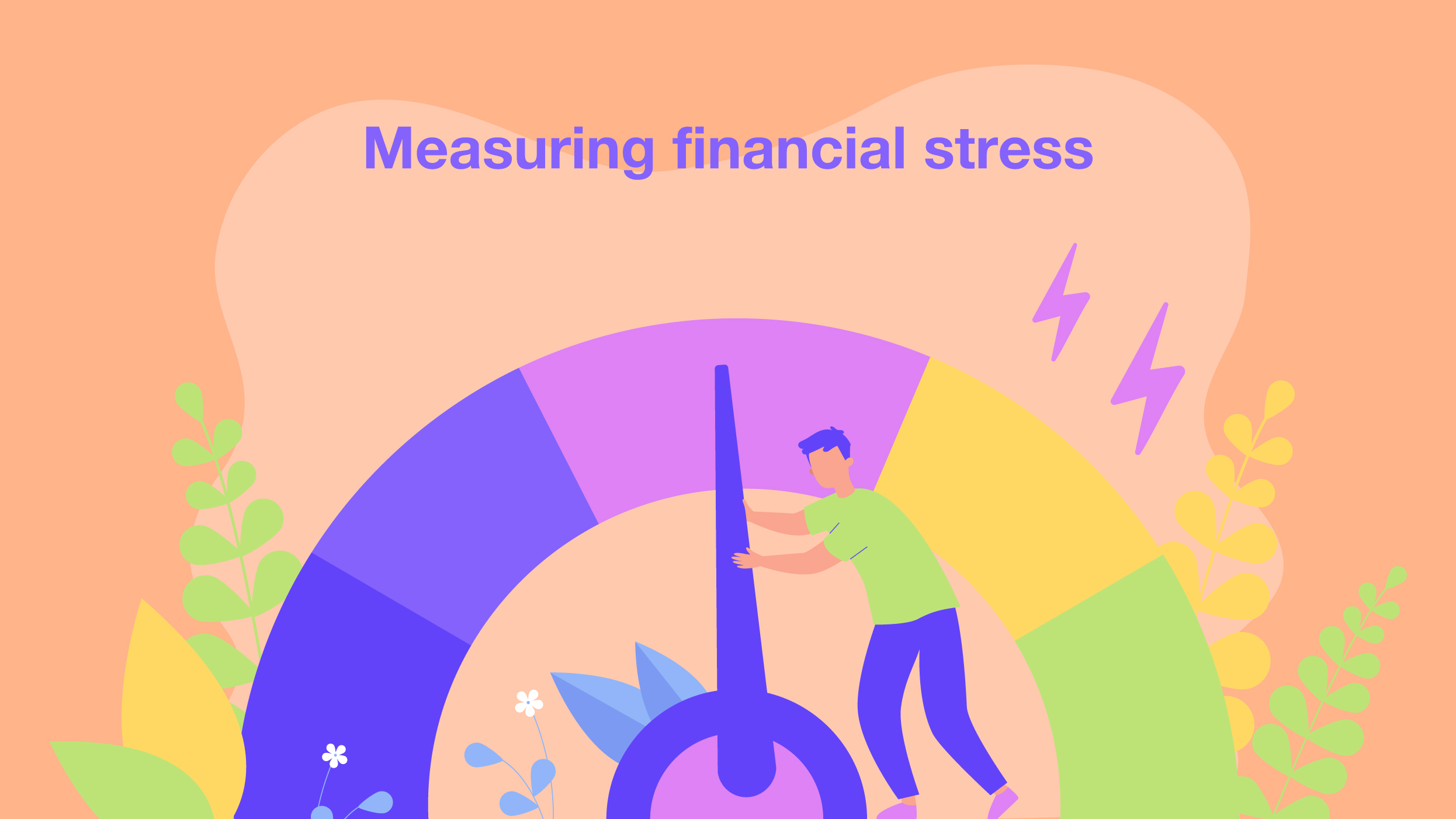Measuring financial stress
Measuring financial stress.
In the second part of our financial stress webinar series, Dr Nicola Gates provides a detailed look at measuring financial stress.
We have covered what is financial stress and why it’s important to understand in part one.
It is important to know what financial stress looks like in general and how it manifests for an individual in terms of symptoms.
Measuring financial stress adequately is an essential part of addressing the corrosive impact of the problem on groups and individuals.
We are interested in this as Financial Mindfulness is an app that measures and reduces financial stress.
It is interesting and may be useful to others to hear something about our journey on this fascinating point.
Previous efforts to measure financial stress
Many excellent efforts to measure financial stress have tended to just look at the financial status aspect.
It is important to know if people have a financial cushion, any savings, whether they can meet daily expenses and those sorts of issues.
It is also important to know if someone can meet the significant financial challenges coming in the future – like retirement. So do people have enough superannuation?
Probing on these topics is often framed as ‘financial wellness’, but it is really about financial status.
‘It’s not looking at wellness because they’re not asking how people feel about worry, concern, or anxiety,’ says Dr Gates.
‘They’re not asking questions about how someone’s financial status impacts their behaviour and how they think and what they do.’
Dr Gates says to address financial stress; we need a “much more comprehensive view of it”.
Developing a comprehensive index to measure financial stress
“From looking at all the research, we developed a Financial Stress Index (FSI) that picks up on five factors that we’ve identified from the literature, and they meet our definition of what financial stress is in terms of a biopsychosocial behavioural model, including financial status” said Dr Gates.
-
- Financial status
- Psychological impact
- Behavioural signs of stress
- Physical and physiological burden
- Social engagement
“Behavioural signs of stress are vital because we need to identify people who engage in really unhelpful behaviour, like gambling,” Dr Gates said.
The physical and psychological burden is vital because to measure the impacts of financial stress, a person’s mental and physical health needs to be considered.
“We also need to look at social engagement because we know there’s a relationship impact,” Dr Gates said.
Overall, there was a concerted effort to design a process that matched well onto significant aspects of the World Health Organisation’s definitions of health and wellbeing.
“In terms of our measure, mapping onto the WHO definition, you can see we’ve got financial security, we’ve got psychological health, we’ve got physical health, we’ve got behavioural signs – which are some of the valuable things, and we’ve also got social engagement.”
The Financial Mindfulness app and the FSI
Financial Mindfulness asks respondents seven questions for each of those dimensions to measure someone’s level of financial stress, so 35 questions in total.
The five specific dimensions are measured by completing a 35 statement questionnaire using the Financial Mindfulness app.
Each employee rates on a frequency scale for how often the statement is true to their specific situation for the past month.
The takeaway message is that in measuring financial stress, people seeking to reduce the problem to think as broadly as possible to capture the enormously widespread impacts of financial stress.
‘In measuring financial stress, we need to keep track of financial health but also mental and physical health.’
The FSI was developed by a team of neuropsychologists and financial experts to work out a person’s financial stress levels and potential symptoms.
The app works by combining awareness of one’s financial stress levels with Mindfulness, financial literacy and goal-setting tools to reduce financial stress.
Aggregated FSI data
The aggregated data from hundreds of questionnaires allows Financial Mindfulness to produce the FSI Quantitative Assessment Report, a leading indicator of where, how, and why financial stress impacts employee’s productivity.
Lost productivity is quantified in dollars and days, providing insights so employers can better support employees.
The report contains all employee FSI results aggregated and analysed across the five specific dimensions on a de-identified basis.
This information has never previously been unavailable to employers before Financial Mindfulness developed it.
Measuring employee financial stress at a granular level informs employers about the nature and extent of support required for employees.
Reports are provided twice a year and track changes over time.
The FSI and the Quantitative Assessment Reports have been developed through rigorous and in-depth research carried out by Financial Mindfulness, drawing upon the expertise of in-house neuropsychologists and finance experts.

Measuring financial stress





